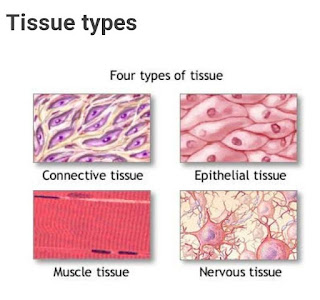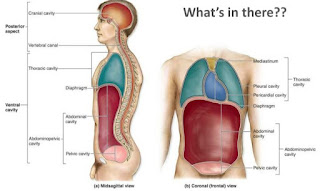COMPOSITION AND FORMATION OF BLOOD
COMPOSITION AND FORMATION OF BLOOD
IntroductionBlood is a fluid connective tissue which circulates continuously around the body allowing constant communication between tissues distant from each other. It is pumped by the heart that circulates throughout the body vio., The arteries, veins and capillaries. The blood carries oxygen and nutrients to the body tissues and removes carbon dioxide and other wastes. All types of blood cells are derived from the bone marrow.
Composition of Blood
Total blood volume: 5-6 littles (8% of body weight or 80 ml/kg body weight)
Specific gravity:1050-1060
Viscosity: 4-5 times that of water
pH: 7.4±0.05; alkaline
Formation of blood cells
* The process of blood cells formation is called Haemopoiesis .
* Blood cells are synthesized mainly in Red Bone Marrow .
* Red bone marrow is a highly vascularized connective tissue located in the microscopic spaces between trabecular of spongy bone tissue. It chiefly present, in bones of the axial skeleton, pectoral and pelvic girdles and the proximal epiphysis of the humerus and femur .About 0.05-0.1% of red bone marrow cells are derived from mesenchyme and are called pluripotent stem cells.
* All blood cells originate from pluripotent stem cells and go through several developmental stages before entering into the blood.
* Pluripotent stem cells in red bone marrow produce two further types of stem cells, which have the capacity to develop into several types of cells. These stem cells are called myeloid stem cells and lymphoid stem cells. Myeloid stem cells begin theri development in red bone marrow and give rise to red blood cells, platelets, monocytes, neutrophils, eosinophils and basophils . Lymphoid stem cells begin their development in red bone marrow but complete it in lymphatic tissues; they give rise to lymphocytes.
* During Haemopoiesis, some of the myeloid stem cells differentiate into progenitor cells. Progenitor cells resemble lymphocytes like stem cells.
* In the next generation the cells are called precursor cells,and elements of blood.
Components of blood
The components of blood are:
1• Plasma
2• Cellular elements
1• Plasma:
Plasma is a clear, straw coloured fluid portion of the blood and represents 55% of the total blood volume ( about 5% of the body weight). It contains: 91% water and 9% solids . The solids comprise 1% inorganic molecules and 8% organic molecules.
* The major inorganic molecules are : Na+,Ca²+, Cl-,HCO³-( mainly extracellular).
- K+, Mg²+, Cu²+ , Po4³-, Protein ( mainly intracellular).
- Fe²+,Fe³+.
* Of 8% total organic molecules:
- 7% are plasma proteins; such albumin, globulin, fibrinogen and prothrombin.
- 1% are other substances like Non - Protein Nitrogenous ( NPN) substances, sugar , fats, enzymes and hormones.
2• Cellular Elements :
The cellular elements of blood represents 45% of the total blood volume called packed cell volume (PCV) or Haematocrit. It includes:
A. Erythrocytes or red blood corpuscles (RBCs)
B. Leukocytes or white blood corpuscles (WBCs)
C. Platelets or thrombocytes.
A. Erythrocytes or red blood corpuscles (RBCs)
Red blood cells are produced in red bone marrow, which is present in the ends of long bones and in flat and irregular bones. These are circular, biconcave discs and non - nucleated . The diameter of red blood cells are about 7 micrometers and their biconcavity increase the surface area for gas exchange.
* R B C count:
- Males 4.7-6.1 million cells/mcL
- Females 4.2-5.4 million cells/mcL
* Diameter: 6.5-8.8 úm ( average 7.3 úm)
Formation of RBC (Erythropoiesis): It is process of formation and maturation of RBC.
Sites:
* Erythropoiesis starts in the third week of intrauterine life, after that it takes place in liver and spleen.
* Bone marrow is the only place for production of RBC.
Stages:
Pluripotent hematopoietic stem cell
Progenitor cell
Proerythroblast
Early normonlast
Intermediate normonlast
Reticulocyte
Erythrocyte


Comments
Post a Comment